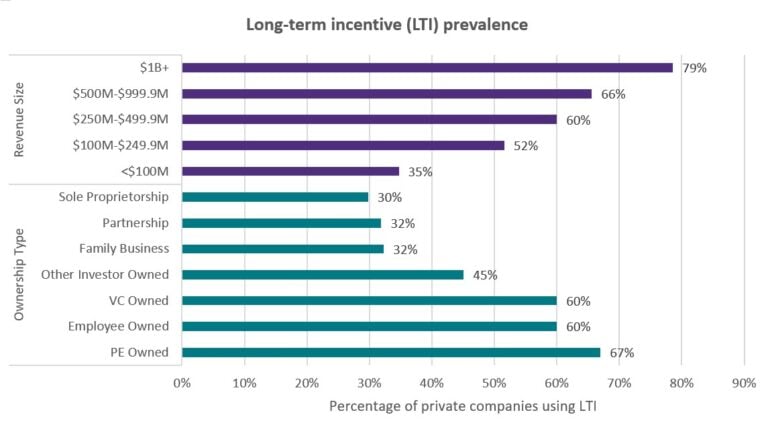
Growing a startup to its full potential is one of the hardest feats in business. Startups essentially progress up along a ladder of growth in five phases. This can be a precarious climb, so it’s easy to want to scramble to the top, but it’s better to take each step carefully and position your company for long-term success.
It’s not how quickly you can climb the ladder that matters, but how you successfully manage through each phase while avoiding the most common pitfalls. Consider these Five Stages on the Ladder of Growth, each with its own “Must Have” and “Must Avoid” items for attention.
Stealth Mode
Must Have: Core Values
Must Avoid: Corporate Development and Business Development Meetings
In stealth mode, you’re racing to create what’s known as MVP (Minimum Viable Product). This is the first feasible product version that will allow you to demonstrate your overall vision and strategy. Building MVP requires recruiting the best available talent from relevant academic backgrounds, career experiences and diverse cultures.
Another aspect of stealth mode involves establishing the company’s core values – defining how we do things here. These values should be communicated in the most impactful manner and leading by example is a must. Long ago I read that you become an average of five people with whom you work.
The culture you lay out for the first 12 employees will define any company, its DNA, and ultimately, its success or failure. Your values statement could be as simple as three words, such as “Respect, Trust and Speed.” We implemented this motto before launching my prior startup firm. We got everyone onboard and motivated, and soon our values snowballed for the next 12 employees, and so on.
In stealth mode, your most valuable resource is time. Time is what you don’t have. Every week you will see a new company coming out of stealth, or someone else solving the same problem you have been working hard to solve for many months. This can get discouraging.
On top of that, Corp Dev or Biz Dev contacts from large companies will be calling you every week. It can be flattering to get that kind of the attention, but I’m convinced these Corp Dev/Biz Dev meetings are a big distraction to your core goal. You will never hear back from those contacts after the meetings. Sometimes it’s a learning exercise for them, and sometimes it provides optionality for other deals they have on the table. In any case, I would discourage you from taking these meetings while still in stealth mode.
“Unless the company culture is equally embraced by everyone at all levels, you are going to have friction.”
Launch Mode
Must Have: Use Cases
Must Avoid: Pay-for-Play Coverage
This is probably the most nerve-wracking and, yet, exciting time in a company’s journey. It’s somewhat like a progressive video game – after working very hard, you get to the next level, only to find out the next stage is even harder.
You may have a 1.0 GA product or service ready for launch when everyone – buyers, partners, prospects, media and analysts alike – will ask the same first question: What do you do? You will proudly describe the product you built over the past 12-18-24 months, but some of them may still not care.
Do not get discouraged. Remember that many startups never get launched, and many more never get traction beyond launch. To succeed, double down on specific use cases – even if it is just one example – and make that the core of your messaging for prospects, elevator pitches, and investor conversations. Use cases help buyers and users understand what you do, and they will only follow up if they perceive the value that you provide.
In the launch phase, many broadcast media outlets, industry publications and awards programs will bombard your inbox with pay-for-play invitations to sponsor content or awards. Such offers can be enticing for newly launched companies, but pay-for-play opportunities waste a lot of resources that you don’t have. More importantly, they can waste the precious time that you will need to make progress.
Traction Mode
Must Have: Revenue Architecture
Must Avoid: Multiple Distribution Channels
This is by far the most delicate time in a young company’s journey. According to Traction Gap Institute, 80% of startups break during this transition from MVP to MVT (Minimum Viable Traction). MVT requires a solution-grade product and business model, along with repeatable sales/marketing processes and multiple quarters of growth. Traction solves everything – hiring, fundraising, or getting acquired.
The unclear part here involves the business model and the process to convert sales leads into annual recurring revenue, or ARR. This step requires cross-functional teams to collectively spend long days working until the sales process is nearly perfected. Revenue architecture is more critical than product architecture in this phase. Having a real set of metrics with all arrows pointing up and to the right is the ideal outcome.
Another critical decision in this phase involves the distribution model. In each company’s journey, there will likely be multiple channels and distribution models. For startups, we all want to do everything right away but it’s important to avoid more than one distribution channel in the traction phase.
You may want to sell through a website marketplace, or you may prefer inside sales reps selling by phone, or in-person sales “boots on the ground.” I would encourage you to focus on one approach and master it first before attempting multiple distribution models. Many startups fail by going down multiple channels here.
Crossing the Chasm Mode
Must Have: Ecosystem
Must Avoid: International Expansion
Crossing the Chasm by Geoffrey Moore is a classic business book that describes a chasm between selling to early product adopters and achieving uptake by the broader market. Moore advises entrepreneurs to “create” the competition and stay laser-focused on a specific market segment. The goal is to create market pull, not just a marketing push. This requires a complete product or use case which can become very sticky over time.
During this phase, it’s critical to build an ecosystem around your offering. For example, having a 100% replacement of any existing manual process or replacement of existing competitive product in its entirety is a requirement. Even a 10% shortfall can hold up customer acquisition. This could mean you offer the product, and partners offer services or add-ons for the complete use case.
The temptation to expand to other parts of the world is much more daunting if your marketing efforts are having an impact outside the core market. As enticing as this is, hold off on pursuing international sales until you reach the other side of the chasm.
I have seen many startups open overseas operations prematurely, only to close them down in a few years. Recognize that the impact of international sales is generally non-material at this stage. My litmus test is Gartner’s Magic Quadrant report. If you are not yet in your leader quadrant, don’t open international operations. If you are a leader, the UK and Australia/New Zealand can be welcoming markets to start ramping up overseas sales processes.
Scale-Up Mode
Must Have: High-Value Network
Must Avoid: Us vs. Them Mentality
Most established companies have refined the art of scaling up. At this point, the end game is growing big enough to make a successful exit by either taking the company public or being acquired.
People buy from people who they know and like. I have never gotten an answer “Yes” to a question that I haven’t asked. My former boss, mentor and a friend told me all along – Enterprise selling is built on the speed of trust through deep relationships. High-value networking is the art of creating trust as you shake hands, and that is the core to relationship selling. Every day, to this day, I practice building three new relationships that are mutually beneficial.
No enterprise company that has embedded networking skills in their GTM functions has failed to scale up. Startups usually fall behind in this skill, or they depend on their board members who may be business development experts. Scaling up is nearly impossible without leaders throughout the company who have high-value networking skills. There are lots of other reasons why you might win or lose, but high-value networking is by far the most important element for success.
By the time you are at this stage, you have grown the number of employees in both the product and field organizations. You have pioneers (developers who love to code and expand use cases) and settlers (developers who love to enhance repeatability in current use cases) on the product team, and farmers (reps who are experts in selling into existing accounts) and hunters (reps who are experts in acquiring new accounts) in the field organization.
Also, unless the company culture is equally embraced by everyone at all levels, you are going to have friction. This is the reason why many companies fail at this last stage, due to an “Us vs. Them” mentality. You find this type of friction frequently in established companies, which kills innovation. This is one of the main reasons why most acquisitions do not integrate well into big companies after the first 12 months.
To conclude, the riskiest but most rewarding goal you can pursue in business is building an enduring, successful company. If you are the entrepreneur founder of a startup, I hope these tips will help you put one hand above the other and start climbing the ladder of growth.




0

1:00 - 5:00 pm
Over 70% of Executives Surveyed Agree: Many Strategic Planning Efforts Lack Systematic Approach Tips for Enhancing Your Strategic Planning Process
Executives expressed frustration with their current strategic planning process. Issues include:
Steve Rutan and Denise Harrison have put together an afternoon workshop that will provide the tools you need to address these concerns. They have worked with hundreds of executives to develop a systematic approach that will enable your team to make better decisions during strategic planning. Steve and Denise will walk you through exercises for prioritizing your lists and steps that will reset and reinvigorate your process. This will be a hands-on workshop that will enable you to think about your business as you use the tools that are being presented. If you are ready for a Strategic Planning tune-up, select this workshop in your registration form. The additional fee of $695 will be added to your total.

2:00 - 5:00 pm
Female leaders face the same issues all leaders do, but they often face additional challenges too. In this peer session, we will facilitate a discussion of best practices and how to overcome common barriers to help women leaders be more effective within and outside their organizations.
Limited space available.

10:30 - 5:00 pm
General’s Retreat at Hermitage Golf Course
Sponsored by UBS
General’s Retreat, built in 1986 with architect Gary Roger Baird, has been voted the “Best Golf Course in Nashville” and is a “must play” when visiting the Nashville, Tennessee area. With the beautiful setting along the Cumberland River, golfers of all capabilities will thoroughly enjoy the golf, scenery and hospitality.
The golf outing fee includes transportation to and from the hotel, greens/cart fees, use of practice facilities, and boxed lunch. The bus will leave the hotel at 10:30 am for a noon shotgun start and return to the hotel after the cocktail reception following the completion of the round.